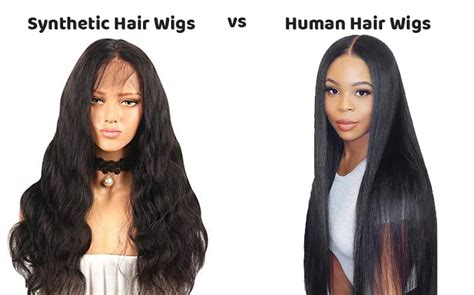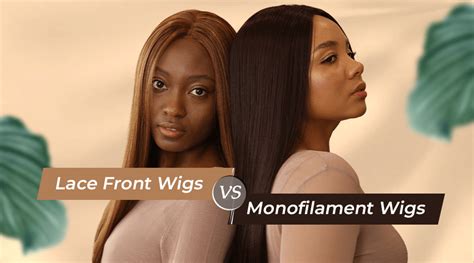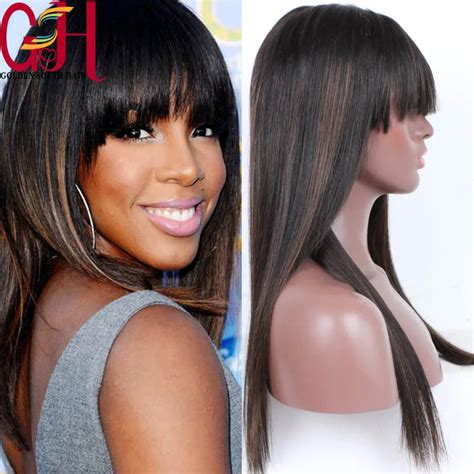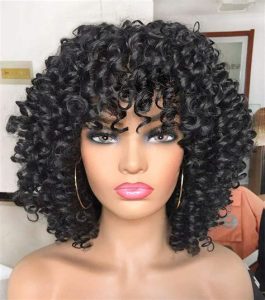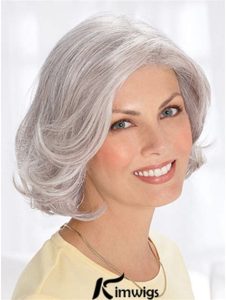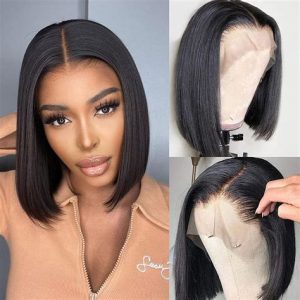African American Wigs Human Hair VS. Synthetic 2025
Are you torn between human hair and synthetic wigs? This article will help you make an informed decision. We’ll compare the two types of wigs in terms of price, quality, and durability. We’ll also provide tips on how to choose the right wig for your needs.

The Price
Human hair wigs tend to be more expensive than synthetic wigs. This is because human hair is a natural material, and it takes more time and effort to process it into a wig. Synthetic wigs, on the other hand, are made from man-made materials, which are less expensive to produce.
The Quality
Human hair wigs are generally considered to be higher quality than synthetic wigs. Human hair is more durable, and it can be styled and colored just like your own hair. Synthetic wigs, on the other hand, can be more prone to tangling and matting, and they may not be able to withstand heat styling.
The Durability
Human hair wigs last longer than synthetic wigs. With proper care, a human hair wig can last for several years. Synthetic wigs, on the other hand, typically last for only a few months.
How to Choose the Right Wig
When choosing a wig, it’s important to consider your budget, your lifestyle, and your personal preferences. If you’re looking for a high-quality wig that will last for several years, a human hair wig is a good option. If you’re on a budget, or if you’re looking for a wig that you can wear every day, a synthetic wig may be a better choice.
The Insider
“Human hair wigs are definitely worth the investment,” says celebrity hairstylist Kim Kimble. “They look and feel more natural, and they can be styled just like your own hair.”Kimble recommends choosing a human hair wig that is the same color and texture as your own hair. This will help the wig to blend in seamlessly with your natural hair.
The Case Study
One woman who has had success with human hair wigs is actress Taraji P. Henson. Henson has been wearing human hair wigs for years, and she says they have helped her to achieve a variety of looks. “I love that I can change my hair color and style without damaging my own hair,” says Henson. “Human hair wigs are the best way to get the look you want without any commitment.”
The How-Long
How long does a human hair wig last? With proper care, a human hair wig can last for several years. However, the lifespan of a wig will vary depending on how often it is worn and how well it is cared for. Here are a few tips to help you extend the life of your human hair wig:
- Avoid over-washing your wig. Wash it only when necessary, and use a mild shampoo and conditioner.
- When you wash your wig, be sure to rinse it thoroughly with cool water.
- Avoid using hot water on your wig, as this can damage the hair.
- When you style your wig, use low heat settings.
- Store your wig in a cool, dry place when you’re not wearing it.
Tables
| Feature | Human Hair Wig | Synthetic Wig |
|---|---|---|
| Price | $200-$2,000 | $50-$200 |
| Quality | Higher | Lower |
| Durability | Several years | A few months |
| Styling | Can be styled just like your own hair | Limited styling options |
| Hair Type | Human Hair Wig | Synthetic Wig |
|---|---|---|
| Texture | Natural | Synthetic |
| Shine | Natural | Artificial |
| Density | Varies | Varies |
| Wig Cap Construction | Human Hair Wig | Synthetic Wig |
|---|---|---|
| Lace Front | Yes | No |
| Full Lace | Yes | No |
| Monofilament | Yes | No |
| Maintenance | Human Hair Wig | Synthetic Wig |
|---|---|---|
| Wash | Every 1-2 weeks | Every 2-3 weeks |
| Condition | Every 2-3 weeks | Every 3-4 weeks |
| Style | Can be styled just like your own hair | Limited styling options |
